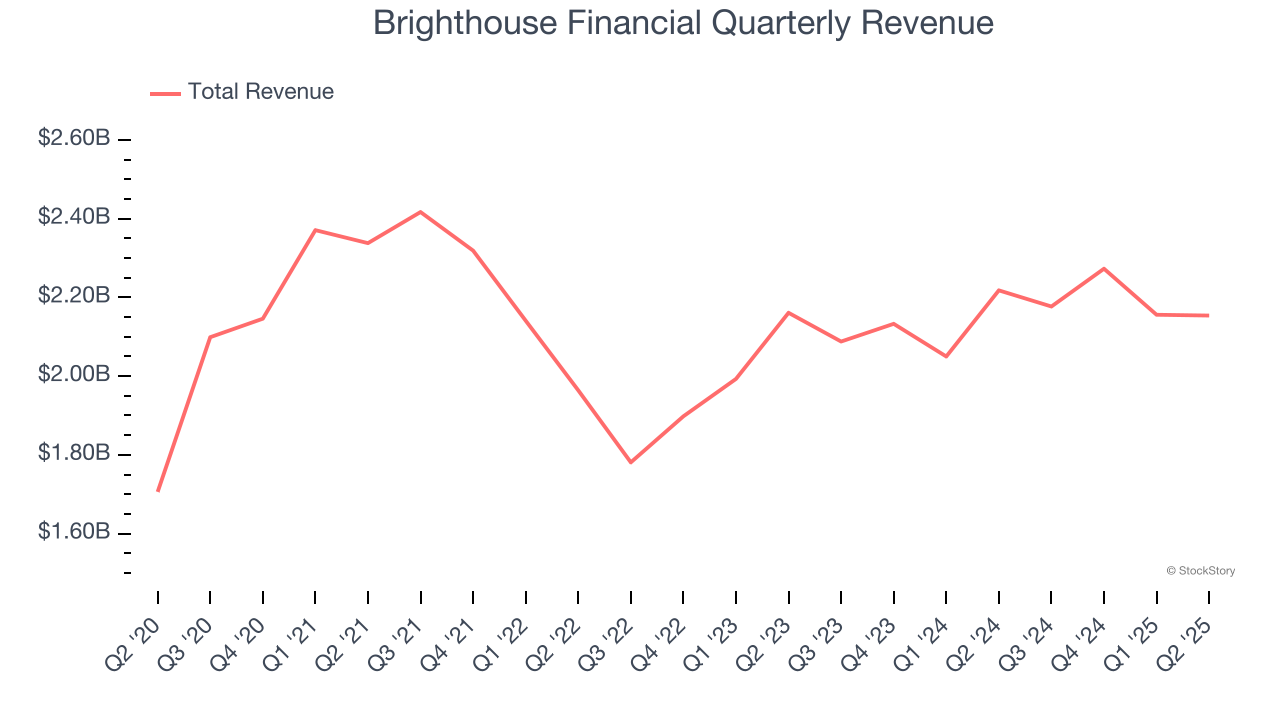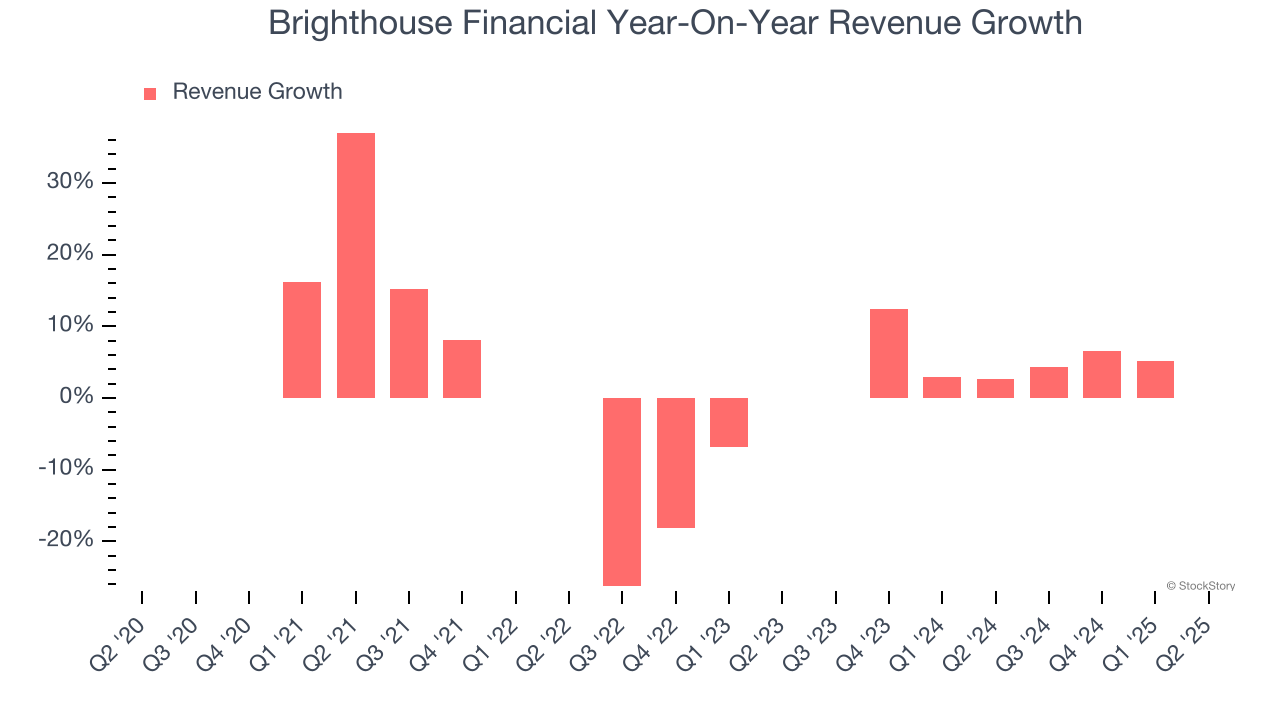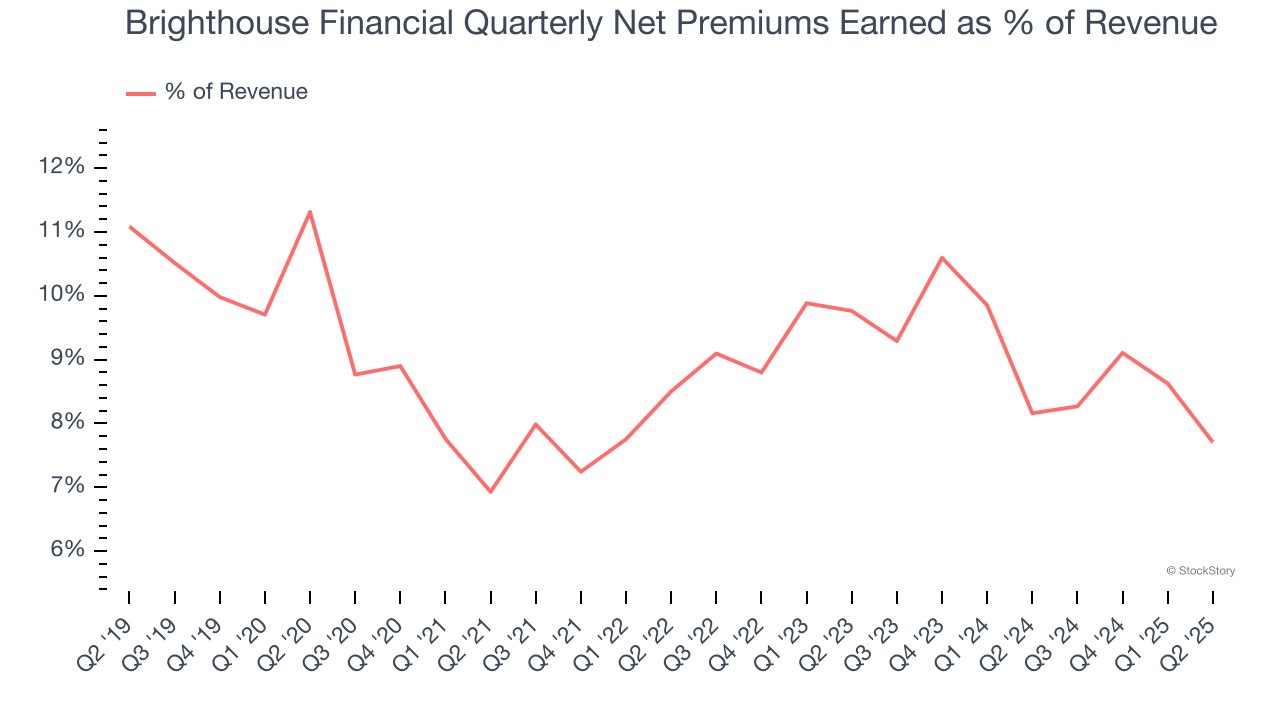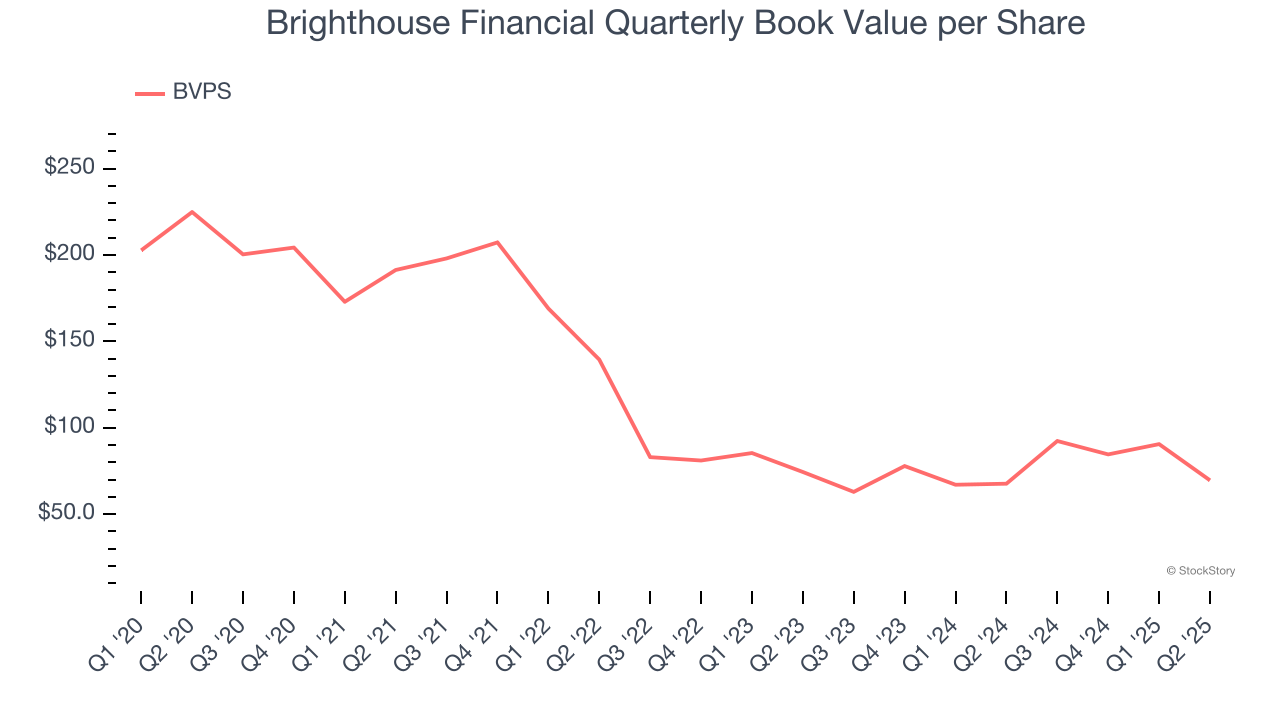
Insurance and annuity provider Brighthouse Financial (NASDAQ:BHF) missed Wall Street’s revenue expectations in Q2 CY2025, with sales falling 2.9% year on year to $2.15 billion. Its non-GAAP profit of $3.43 per share was 21.8% below analysts’ consensus estimates.
Is now the time to buy Brighthouse Financial? Find out by accessing our full research report, it’s free.
Brighthouse Financial (BHF) Q2 CY2025 Highlights:
- Net Premiums Earned: $166 million vs analyst estimates of $191.3 million (8.3% year-on-year decline, 13.2% miss)
- Revenue: $2.15 billion vs analyst estimates of $2.18 billion (2.9% year-on-year decline, 1.3% miss)
- Pre-Tax Profit Margin: 4.3% (3.7 percentage point year-on-year increase)
- Adjusted EPS: $3.43 vs analyst expectations of $4.39 (21.8% miss)
- Market Capitalization: $2.64 billion
“I am pleased that we ended the quarter with an estimated combined RBC ratio that was within our target range of 400% to 450% in normal market conditions,” said Eric Steigerwalt, president and CEO, Brighthouse Financial.
Company Overview
Spun off from MetLife in 2017 to focus specifically on retail financial products, Brighthouse Financial (NASDAQ:BHF) provides annuity contracts and life insurance products designed to help individuals protect wealth, generate income, and transfer assets.
Revenue Growth
Insurers earn revenue three ways. The core insurance business itself, often called underwriting and represented in the income statement as premiums earned, is one way. Investment income from investing the “float” (premiums collected upfront not yet paid out as claims) in assets such as fixed-income assets and equities is the second way. Fees from various sources such as policy administration, annuities, or other value-added services is the third.
Unfortunately, Brighthouse Financial’s 2.2% annualized revenue growth over the last five years was sluggish. This fell short of our benchmarks and is a rough starting point for our analysis.

Long-term growth is the most important, but within financials, a half-decade historical view may miss recent interest rate changes and market returns. Brighthouse Financial’s annualized revenue growth of 5.8% over the last two years is above its five-year trend, but we were still disappointed by the results.  Note: Quarters not shown were determined to be outliers, impacted by outsized investment gains/losses that are not indicative of the recurring fundamentals of the business.
Note: Quarters not shown were determined to be outliers, impacted by outsized investment gains/losses that are not indicative of the recurring fundamentals of the business.
This quarter, Brighthouse Financial missed Wall Street’s estimates and reported a rather uninspiring 2.9% year-on-year revenue decline, generating $2.15 billion of revenue.
Net premiums earned made up 8.6% of the company’s total revenue during the last five years, meaning Brighthouse Financial is well diversified and has a variety of income streams driving its overall growth. Nevertheless, net premiums earned is critical to analyze for insurers because they’re considered a higher-quality, more recurring revenue source by investors.

Unless you’ve been living under a rock, it should be obvious by now that generative AI is going to have a huge impact on how large corporations do business. While Nvidia and AMD are trading close to all-time highs, we prefer a lesser-known (but still profitable) stock benefiting from the rise of AI. Click here to access our free report one of our favorites growth stories.
Book Value Per Share (BVPS)
Insurance companies are balance sheet businesses, collecting premiums upfront and paying out claims over time. The float – premiums collected but not yet paid out – are invested, creating an asset base supported by a liability structure. Book value captures this dynamic by measuring:
- Assets (investment portfolio, cash, reinsurance recoverables) - liabilities (claim reserves, debt, future policy benefits)
BVPS is essentially the residual value for shareholders.
We therefore consider BVPS very important to track for insurers and a metric that sheds light on business quality because it reflects long-term capital growth and is harder to manipulate than more commonly-used metrics like EPS.
Brighthouse Financial’s BVPS declined at a 20.9% annual clip over the last five years. On a two-year basis, BVPS fell at a slower pace, dropping by 3.3% annually from $74.40 to $69.57 per share.

Over the next 12 months, Consensus estimates call for Brighthouse Financial’s BVPS to grow by 159% to $146.30, elite growth rate.
Key Takeaways from Brighthouse Financial’s Q2 Results
We struggled to find many positives in these results. Its net premiums earned missed and its EPS fell short of Wall Street’s estimates. Overall, this quarter could have been better. The stock remained flat at $45.75 immediately following the results.
Brighthouse Financial’s earnings report left more to be desired. Let’s look forward to see if this quarter has created an opportunity to buy the stock. What happened in the latest quarter matters, but not as much as longer-term business quality and valuation, when deciding whether to invest in this stock. We cover that in our actionable full research report which you can read here, it’s free.
